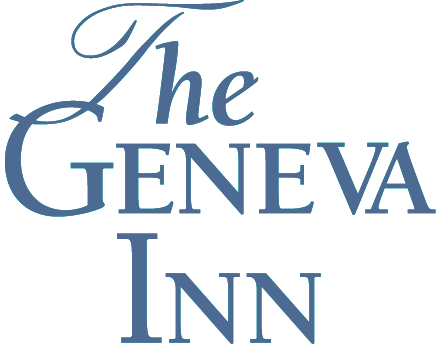A Historied Heritage
The clams were tough back then, not like those served here today, but they were nourishing food, cooked fresh or dried for later. The Potawatomi were good carvers and used the shells to make beads and decorative ornaments. Many arrowheads were also carved in this area, a fact proven by the flint chips and fragments once found regularly by those walking the lake shore path.
Nearby Big Foot Beach State Park is named after Maunksuck, the chief of the Potawatomi Indians. Literally translated, his name means "Big Foot," and the entire lake was known by early French traders as Big Foot Lake. The Potawatomi living on this site had permanent lodges; circular domes built upon arched poles. The sides were covered with mats woven from reeds pulled from the marshy lake shore. Large slabs of bark usually formed the roofs. More woven mats covered the floor, and skins and furs hung on the interior walls. With a fire pit in the center that vented to the outside through a hole in the roof, these lodging homes were practical and comfortable, even through the cold winters spent on this eastern shore of Geneva Lake.
A Humble Beginning
The first white man to build a home in this area was A. H. Button. He and his family settled in the early 1850s on land just south of what is now Big Foot Beach State Park. This part of the lake is known as Buttons Bay in his honor. A carpenter and a contractor, Button was called upon in 1883 to help build Gypsy Lodge, a large summer estate on Buttons Bay. The local newspaper at the time, the Lake Geneva Herald, stated, "This is the first summer residence on this part of the shore, which is so pretty that it is a wonder that others have not seen it before." That pretty place is the location which The Geneva Inn now commands.
J. Hall Dow paid $800 per acre back then for this piece of land–eight acres, with 600 feet of shoreline. He bought it from Julian Rumsey, who owned several parcels of land around the lake, including his own estate, Shadow Hill, farther north along the shore. A prominent Chicago businessman, Rumsey was head of Rumsey Brothers and Company, trade commissioners. Rumsey served two terms as the president of the Chicago Board of Trade and was mayor of Chicago in 1861-62.
Dow himself was prominent, as president of Union Brass Manufacturing Co. in Chicago. His Gypsy Lodge cost $20,000 to build. "The plans of the house show that it will be a very pretty place," said the Lake Geneva Herald, "and as the location is unexcelled, Mr. Dow will soon be the fortunate owner of as handsome a summer home as one could wish for." Mr. Dow's good fortune was not to last for long. He and his wife, Florence May, enjoyed their lovely estate during the summers of 1884 and '85. But just one week before they planned to return to Gypsy Lodge to spend the summer of 1886, Mr. Dow died at his Chicago home from typhoid fever. His remains were brought to Lake Geneva for burial in the local cemetery. "He was a most estimable gentleman," stated the Lake Geneva Herald, "and well-liked by all who knew him." A Chicago friend even chartered a private train engine and car to get to Dow's funeral after missing the regular train departure by a few minutes.
Mrs. Dow chose to spend the next summers with friends in Yonkers, New York, rather than return alone to Gypsy Lodge. Instead, she rented the home to other families seeking refuge from Chicago's hot summers. In October of 1890, Mrs. Dow returned briefly to Lake Geneva and sold the estate to Arthur Kaye.
New Ownership
Kaye was owner of Kaye's Park, a popular resort located on the present site of Northwestern Military Academy, now closed. In 1892, Kaye sold the property to one of the families who had rented it a few summers earlier, that of J. M. W. Jones.
Jones was an editor and stationer, owner of the J. M. W. Jones Company. Though his business was completely wiped out by the Chicago fire, he wasn't discouraged, and set up shop again immediately. By the time he bought Gypsy Lodge, business was thriving. His wife was Helen Snow Jones. Her sister, Katherine Snow Isham, lived nearby with her husband, Dr. Ralph Isham, in Shadow Hill, formerly occupied by Julian Rumsey.
The Jones family loved the rambling Gypsy Lodge, but before they moved in they added an extensive wing to the home, nearly doubling its size. A few years later, another small addition further added space. The home had eight bedrooms and many fireplaces. Obviously one to do things in grand style, Jones was often spotted about the area in his "Tallyho," a fine carriage drawn by several horses, accompanied by uniformed coachmen and footmen.
But Jones also knew his share of tragedy. Three of his children lost their lives early in adulthood. After Jones himself died in 1912, his three remaining children took over Gypsy Lodge. These children, E. Lee Jones, and his sisters, Helen and Katherine, renamed it Sunnycroft. Though they had the estate wired for electricity shortly after the death of their father, they made few other changes.
The Jones children, too, had their father's flair for flamboyance. The Lake Geneva Herald described one holiday party, hosted by E. Lee Jones in the coach barn, as a "scene of gaiety and good cheer unsurpassed in the special events of the year." The grounds and drives were hung with Japanese lanterns, and the coach barn was "brilliant with Christmas decorations and flags." Several rounds of euchre were played, and after the winners and losers were tallied, the consolation prize, a nursing bottle, went to Ebenezer Davidson, then mayor of Lake Geneva. The festivity, said the Herald, was "calculated to do a world of good in creating a more social spirit among our people."
The Times are Changing
In 1920, the estate was sold to Dr. Stephan Pietrowicz, a Chicago physician. The main home later became known as Sunnycroft Lodge, a restaurant and guest house. The grounds were subdivided in the 1940s and soon after the building was renamed The Shore Club.
As The Shore Club, it evolved into a Lake Geneva landmark. The grand front porch overlooking the lake became the main dining room. About a dozen or so guest rooms provided comfort for overnight guests. Many momentous events were celebrated in the restaurant over the years, and many special occasions toasted. Though the establishment changed hands a few times during the next 40 years, it always maintained a reputation for fine dining, relaxed lodging, and good fun. Some guests from the 1970s may even remember Murphy, a black Labrador owned by manager Ed Kennedy, sleeping in a corner of the cocktail lounge.
In 1987, Jim and Cheryl Wiszowaty took over The Shore Club, and renamed it Buttons Bay Inn, recognizing its location on this famous part of Geneva Lake. Interestingly, a century earlier, when Dow built his summer home here, many began to call the bay "Gypsy Bay," after the grand estate. Even a 1902 map refers to "Gipsy Bay." But the new name never really caught on, and the bay remains known as Buttons Bay.
Yet while the name "Buttons Bay" has been enduring, Buttons Bay Inn was rather short-lived. The Wiszowatys sold the property in 1989 to the Geneva Waterfront Company to make room for The Geneva Inn. The new owners, Mr. and Mrs. Clarence W. Schawk, considered refurbishing the 105-year-old home, but there were far too many structural and building code problems. In September of that year, a wrecking crew took four hours to raze the building.
On the 15th of June in 1990, The Geneva Inn held its Grand Opening. Since then, it has been embraced by its many visitors. Lake Geneva is one of the most beautiful places in the Midwest, and The Geneva Inn is the most unique property of its kind on the lake. With its dramatic dining room, stunning atrium, and luxurious guest rooms, The Geneva Inn doesn't imitate the past, but it certainly lives up to the glorious tradition of its history.

